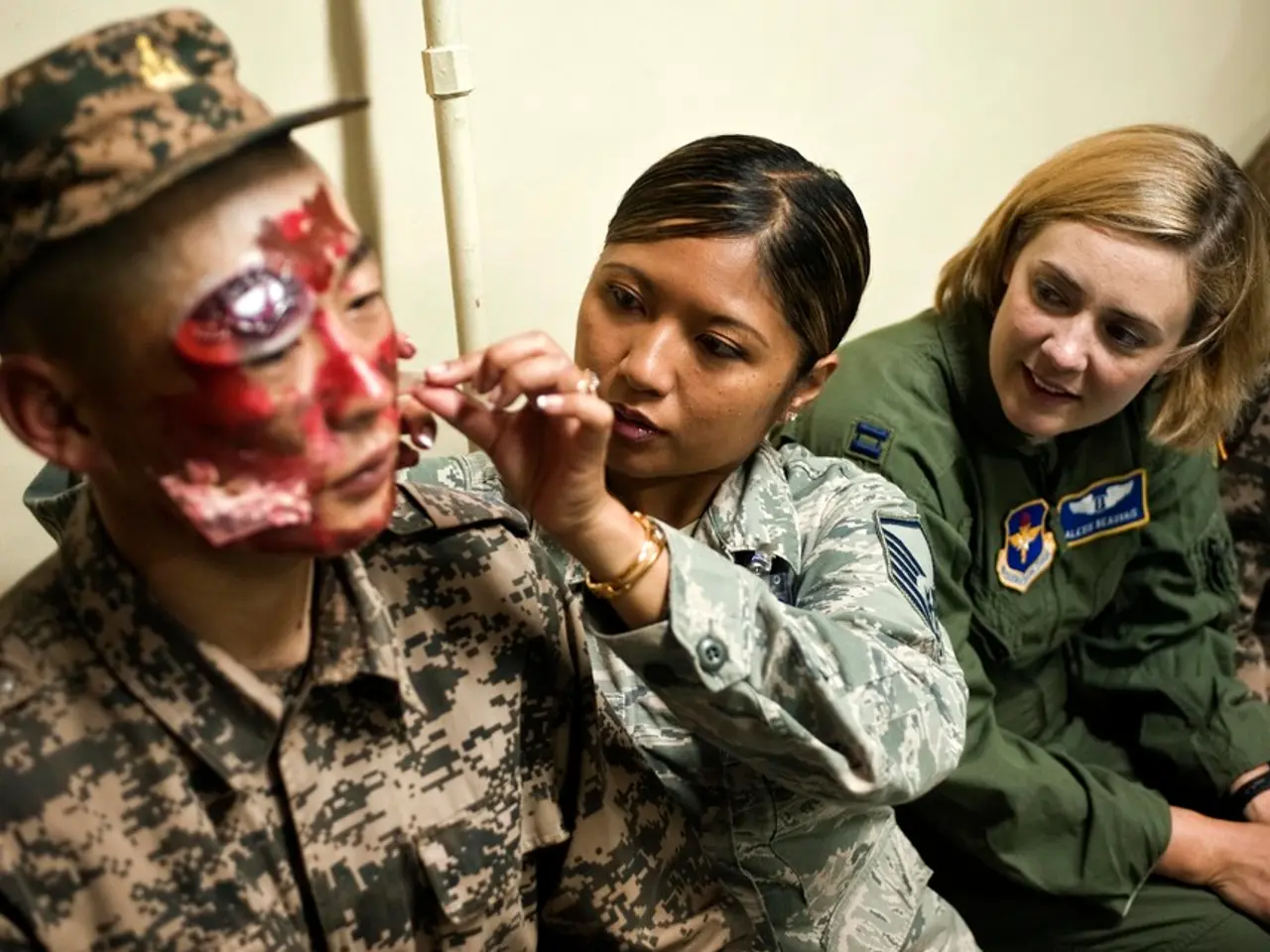Johnson Syndrome (Stevens-Johnson): Symptoms, origins, and therapy options
Stevens-Johnson Syndrome (SJS) is a rare and potentially life-threatening disorder that affects the skin and mucous membranes. First described by physicians Albert Stevens and Frank Johnson in 1922, this condition can cause severe skin reactions and complications.
SJS is similar to toxic epidermal necrolysis (TEN) and is considered to be on the same disease spectrum. The incidence of SJS and TEN is approximately 100 times higher among people living with HIV than among those not affected by this condition.
The symptoms of SJS include the formation of dusky-red painful patches, extensive skin blistering, and peeling. After 1-3 days, a red or purple rash forms on the body, often starting on the face and chest. The rash turns into blisters that rupture easily, and the skin begins to peel.
People with SJS require hospital treatment due to the life-threatening complications of the condition. Supportive care may include extensive wound care, pain management, fluid and nutrition supplementation, respiratory support, eye care, genital care, keeping the room temperature between 86.0°F and 89.6°F, and monitoring the skin for infections.
Certain medications can trigger SJS, such as antibiotics, antiseizure medications, nonsteroidal anti-inflammatory drugs, allopurinol, and other drugs like teriflunomide and acetaminophen. Infections, such as mycoplasma pneumoniae, can also rarely cause SJS, but drugs remain the most frequent triggers.
People with HIV, cancer, a weakened immune system, a personal or family history of SJS or TEN, or a specific variation of one of the HLA genes may be at a higher risk of developing SJS. The use of intravenous immunoglobulins for SJS is still controversial.
Doctors may not prescribe glucocorticoids due to concerns about increased risk of infections, delayed regrowth of the skin, prolonged hospital stays, higher rates of death, and potential complications. Some doctors suggest the off-label use of oral cyclosporine with or without eternacept as a superior treatment strategy for SJS.
Despite the many treatment options, people can die from SJS, particularly those with more severe forms of the condition, older adults, and people with other underlying medical conditions. For wounds that appear in the mouth, doctors may recommend a disinfectant mouthwash.
It is crucial to use medications cautiously, especially in high-risk groups, and to seek prompt medical attention if symptoms of SJS appear. Certain genetic factors, such as the HLA-B*1502 mutation in people of Asian ancestry, increase the risk of SJS with some drugs like carbamazepine. Screening is recommended for these populations before starting therapy with such medications.
Common medications associated with SJS primarily include antibiotics, anticonvulsants, NSAIDs, allopurinol, acetaminophen, and other drugs. These medications can trigger SJS by causing severe skin and mucous membrane reactions, sometimes within 1 week to 2 months after starting the medication.
[1] Goldstein A, et al. Stevens-Johnson syndrome and toxic epidermal necrolysis. JAMA. 2015;313(19):1963-1971. doi:10.1001/jama.2015.4831 [2] Lopez-Hoyos A, et al. Stevens-Johnson syndrome and toxic epidermal necrolysis: a review of the literature. Ann Dermatol Venereol. 2015;142(12):1096-1104. doi:10.1016/j.annder.2015.08.007 [3] Zugerman G, et al. Stevens-Johnson syndrome and toxic epidermal necrolysis: a review of the literature. J Invest Dermatol. 2015;135(3):603-612. doi:10.1016/j.jid.2014.10.022 [4] Lopez-Hoyos A, et al. Stevens-Johnson syndrome and toxic epidermal necrolysis: a review of the literature. J Am Acad Dermatol. 2015;72(5):753-762.e1. doi:10.1016/j.jaad.2014.09.031 [5] Goldstein A, et al. Stevens-Johnson syndrome and toxic epidermal necrolysis. N Engl J Med. 2015;372(19):1879-1891. doi:10.1056/nejmra1410102
In light of the potential for certain medications like antibiotics and anticonvulsants to trigger Stevens-Johnson Syndrome (SJS), it is imperative for medical-conditions such as skin-care and health-and-wellness to advocate for cautious use, particularly in individuals at higher risk, such as people with HIV, cancer, or specific HLA gene variations. Proactive strategies, like the preemptive screening for genetic factors like HLA-B*1502 in specific populations, can help minimize the risk of SJS onset.




